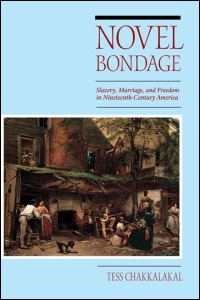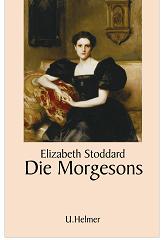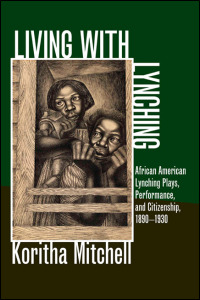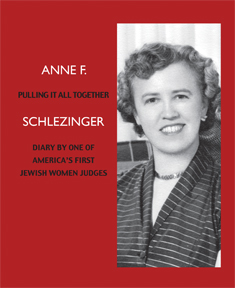|
|
New Books 2011 |
If you are a member of SSAWW and would like your book listed here, please send the publication information (including a link to the press's page about the book) to Donna Campbell, ssaww.web@gmail.com.If you would like any information included on this page, please send it in the body of your message,not as a .pdf attachment.
Book notices are posted in the order in which they were received, with the most recent ones at the top of the page. Notices are abbreviated to fit the space limitations on this page; please click on the link to the publisher's site for full details. |
 |
Tess Chakkalakal, Novel Bondage:
Slavery, Marriage, and Freedom in Nineteenth-Century America
Southern Illinois U P, 2011.
Filling a long-standing gap in our knowledge about slave-marriage, Novel Bondage unravels the interconnections between marriage, slavery, and freedom through renewed readings of canonical nineteenth-century novels and short stories by black and white authors. Tess Chakkalakal expertly mines antislavery and post–Civil War fiction to extract literary representations of slave-marriage, revealing how these texts and their public responses took aim not only at the horrors of slavery but also at the legal conventions of marriage.
Situating close readings of fiction alongside archival material concerning the actual marriages of authors such as Lydia Maria Child, Harriet Beecher Stowe, William Wells Brown, and Frank J. Webb, Chakkalakal examines how these early novels established literary conventions for describing the domestic lives of American slaves in describing their aspirations for personal and civic freedom. Exploring this theme in post–Civil War works by Frances E. W. Harper and Charles Chesnutt, she further reveals how the slave-marriage plot served as a fictional model for reforming marriage laws.
"Tess Chakkalakal advances important scholarship on African American marriage during and immediately following the slave era. Her readings of canonical authors are provocative and controversial, but grounded well enough to enliven conversations about these writers and their times."--Frances Smith Foster, author of 'Til Death or Distance Do Us Part: Love and Marriage in African America
http://www.press.uillinois.edu/books/catalog/88typ9ex9780252036330.html |
 |
Haynes, Rosetta R. Radical Spiritual Motherhood: Autobiography and Empowerment in Nineteenth-Century African American Women. Baton Rouge: Louisiana State University Press, 2011. Print. ISBN: 978-0-8071-3694-2
Radical Spiritual Motherhood is a study of the spiritual autobiographies of nineteenth-century African American women preachers Jarena Lee, Zilpha Elaw, Julia Foote, Amanda Smith, and Rebecca Jackson. These works are examined within the context of the narratives of former slaves Harriet Jacobs, Mary Prince, and Sojourner Truth in order to explore the links between the treatment of sexuality and the body in the texts of enslaved and free black women. And to show the continued relevance of the lives and writing of Lee, Elaw, Foote, Smith, and Jackson, Haynes also includes a discussion of twentieth-century African American Episcopal priest Pauli Murray, who embodies and celebrates the spiritual and cultural tradition of her nineteenth-century foremothers.
http://lsupress.org/books/detail/radical-spiritual-motherhood/ |
 |
Bridging Cultures International Women Faculty Transforming the US Academy
Edited by Sarah R. Robbins, Sabine H. Smith, and Federica Santini
Lanham, MD: University Press of America: ISBN 0-7618-5495-9 / 978-0-7618-5495-
Bridging Cultures explores the experiences of international women faculty as they acculturate to the US academy. In a series of memoirs shaped by multiple disciplinary perspectives, these women reflect on their gendered personal experiences as “ex-pat” faculty members and set their stories within the larger context of American higher education’s increasingly international character. Response pieces by scholars drawn from a range of fields and institutional settings situate this project within diverse frameworks. The response pieces will inform and educate faculty, students, and administrators interested in shaping the culture of the academy today. With an introduction focused on their interdisciplinary feminist methodology, an epilogue revisiting the collaborative strategies employed throughout their project, and a set of generative discussion questions, the editors provide numerous tools to support related research and teaching. They also provide a means for professional development for both faculty and administrators.
Bridging Cultures offers a much needed, insightful and nuanced portrait of international women faculty in American higher education today. The collection of essays blends compelling narratives and critical analyses that together clarify the complex terrain of academic lives at the precarious intersection of gender, race and international origin in the US Academy. . . Bridging Cultures is a goldmine for faculty developers, academic administrators, faculty mentors and all those who wish to understand and support international women faculty who are a growing and vital dimension of American higher education. —Deborah DeZure, assistant provost for Faculty and Organizational Development, Michigan State University
www.eng.tcu.edu/pdf_docs/Bridging_Cultures.pdf
|
 |
Susanne Opfermann and Helm Breinig, trans. Elizabeth Stoddard's The Morgesons
From Karen Kilcup: Susanne Opfermann and Helm Breinig have just published a German translation of *The Morgesons*--great news for the Society's European members. Here's the link to Amazon.uk with the picture:
http://www.amazon.co.uk/Die-Morgesons-Elizabeth-Stoddard/dp/3897413280
|
 |
Robin Bernstein, Racial Innocence: Performing American Childhood from Slavery to Civil Rights (NYU Press, 2011).
In Racial Innocence, Robin Bernstein argues that the concept of "childhood innocence" has been central to U.S. racial formation since the mid-nineteenth century. Children--white ones imbued with innocence, black ones excluded from it, and others of color erased by it--figured pivotally in sharply divergent racial agendas from slavery and abolition to antiblack violence and the early civil rights movement. Bernstein takes up a rich archive including books, toys, theatrical props, and domestic knickknacks which she analyzes as "scriptive things" that invite or prompt historically-located practices while allowing for resistance and social improvisation. Integrating performance studies with literary and visual analysis,
Bernstein offers singular readings of theatrical productions from
blackface minstrelsy to Uncle Tom's Cabin to The Wonderful Wizard of Oz;
literary works by Joel Chandler Harris, Harriet Wilson, and Frances
Hodgson Burnett; material culture including Topsy pincushions, Uncle Tom
and Little Eva handkerchiefs, and Raggedy Ann dolls; and visual texts
ranging from fine portraiture to advertisements for lard substitute.
Throughout, Bernstein shows how "innocence" gradually became the exclusive province of white children--until the Civil Rights Movement succeeded not only in legally desegregating public spaces, but in culturally desegregating the concept of childhood itself.
"Nineteenth and early twentieth-century material culture comes alive in Robin Bernstein's brilliant study of the racialized and gendered ideologies that shape, inform and continue to haunt notions of American childhood into the present day. Through imaginative and masterfully innovative archival research, Bernstein shows how representations of childhood and child's play are integral to the making of whiteness and blackness and citizenship in this country. Racial Innocence is a groundbreaking book that for the first time illuminates the powerful and critical connections between constructions of girlhood, racial formations and American popular culture." --Daphne Brooks, Princeton University
http://nyupress.org/books/book-details.aspx?bookid=5773
|
 |
Jennifer S. Tuttle and Carol Farley Kessler, eds. Charlotte Perkins Gilman: New Texts, New Contexts.
Charlotte Perkins Gilman: New Texts, New Contexts represents a new phase of feminist scholarship in recovery, drawing readers’ attention to Gilman’s lesser-known works from fresh perspectives that revise what we thought we knew about the author and her work. Volume contributors consider an array of texts that have not yet enjoyed adequate critical scrutiny, including Gilman’s short fiction, drama, and writing for periodicals, as well as her long fiction. Similarly, incorporating careful archival, biographical, and historical research, contributors explore Gilman’s life and writings—including her most famous story, “The Yellow Wall-Paper”—through strikingly new critical lenses.
“With this collection, the editors aim to provide additional context for Gilman’s life and work and to engage with texts often overshadowed by her canonical ones. The editors as well as the contributors have succeeded in these two goals. They situate Gilman more fully in her times and widen the scholarly lens so that more of Gilman’s numerous works come into focus.” —Cynthia J. Davis, professor of English, University of South Carolina
http://www.ohiostatepress.org/index.htm?books/book%20pages/tuttle%20charlotte.html
|
 |
Martha Nell Smith, Emily Dickinson: A User’s Guide.Wiley-Blackwell Publishers, forthcoming Spring 2012.
An introduction to the poet, her writings, their receptions, cultural valences, readers’ relations to the iconic figure and her work, and, by focusing on one of America’s premier poets, readers’ more general relations to poems and poets and their sociocultural work in manuscript, in print, and in the digital world. Features important new biographical and textual discoveries not available in other works on Dickinson.One of the great ironies of American literary history is that while its premier woman poet Emily Dickinson generates hundreds of books, articles, increasing mention in popular and high brow culture (sitcoms, rock and folk recordings, movies, ballets, operas), she “did not publish” during her lifetime. . .or at least not in the ways publication is generally understood. In fact, no one knows for absolute certain how Emily Dickinson regarded her deeply philosophical, sometimes whimsical, passionately intellectual, passionately erotic writings and their relation to the world of publication and celebrity authors. And to tell the truth, no one really knows exactly what we are reading when we read poems and letters by Emily Dickinson. That said, that she is a major American poet is indisputable. An introduction to her lives and writings, Emily Dickinson, A User’s Guide is a critical reflection about the status and reach of the author and writer Emily Dickinson, the state of Dickinson studies, and some of the broader implications of each for American literature, culture, and education, for the importance and meaning of poetry to a wide variety of audiences. In brief, the User’s Guide is a story of reading—reading poetry, reading prose, reading culture, reading audiences, reading other people’s mail—and a story about why reading and writing about reading is of vital importance for culture and society now more than ever. No other introduction to Emily Dickinson exposes readers to deep engagements with the three major digital resources on her writings and her life, and no other book on Dickinson reads her in manuscript, in the many print editions produced since her death in 1886, and in the digital productions of her work produced since 1994. No other book features the new biographical and textual discoveries that have just come to light in 2011.http://www.amazon.co.uk/Emily-Dickinson-Blackwell-Introductions-Literature/dp/1405147202
|
 |
Susan K. Harris, God's Arbiters:
Americans and the Philippines, 1898-1902
(Oxford U P)
When the U.S. liberated the Philippines from Spanish rule in 1898, the exploit was hailed at home as a great moral victory, an instance of Uncle Sam freeing an oppressed country from colonial tyranny. The next move, however, was hotly contested: should the U.S. annex the archipelago? The disputants did agree on one point: that the United States was divinely appointed to bring democracy--and with it, white Protestant culture--to the rest of the world. They were, in the words of U.S. Senator Albert Beveridge, "God's arbiters," a civilizing force with a righteous role to play on the world stage.
Mining letters, speeches, textbooks, poems, political cartoons and other sources, Susan K. Harris examines the role of religious rhetoric and racial biases in the battle over annexation. She offers a provocative reading both of the debates' religious framework and of the evolution of Christian national identity within the U.S. The book brings to life the personalities who dominated the discussion, figures like the bellicose Beveridge and the segregationist Senator Benjamin Tillman. It also features voices from outside U.S. geopolitical boundaries that responded to the Americans' venture into global imperialism: among them England's "imperial" poet Rudyard Kipling, Nicaragua's poet/diplomat Ruben Dario, and the Philippines' revolutionary leaders Emilio Aguinaldo and Apolinario Mabini. At the center of this dramatis personae stands Mark Twain, an influential partisan who was, for many, the embodiment of America. Twain had supported the initial intervention but quickly changed his mind, arguing that the U.S. decision to annex the archipelago was a betrayal of the very principles the U.S. claimed to promote.
http://www.oup.com/us/catalog/general/subject/LiteratureEnglish/AmericanLiterature/19thC/?view=usa&ci=9780199740109 |
 |
Koritha Mitchell, Living with Lynching African American Lynching Plays, Performance, and Citizenship, 1890-1930
The first full-length critical study of lynching plays in American culture
Living with Lynching: African American Lynching Plays, Performance, and Citizenship, 1890–1930 demonstrates that popular lynching plays were mechanisms through which African American communities survived actual and photographic mob violence. Often available in periodicals, lynching plays were read aloud or acted out by black church members, schoolchildren, and families. Koritha Mitchell shows that African Americans performed and read the scripts in community settings to certify to each other that lynch victims were not the isolated brutes that dominant discourses made them out to be. Instead, the play scripts often described victims as honorable heads of household being torn from model domestic units by white violence.
In closely analyzing the political and spiritual uses of black theatre during the Progressive Era, Mitchell demonstrates that audiences were shown affective ties in black families, a subject often erased in mainstream images of African Americans. Examining lynching plays as archival texts that embody and reflect broad networks of sociocultural activism and exchange in the lives of black Americans, Mitchell finds that audiences were rehearsing and improvising new ways of enduring in the face of widespread racial terrorism.
http://www.press.uillinois.edu/books/catalog/32xhk5kq9780252036491.html
|
 |
Ana Nunes, African American Women Writers' Historical Fiction (Palgrave Macmillan)
This volume explores African American historical fiction written by women in the last four decades of the twentieth century. Comprehensive in scope, this book refers to over thirty authors whose work has contributed to the tradition, from Margaret Walker to Sherley Anne Williams to Toni Morrison. Ana Nunes’s approach to the text emphasizes the narrative and thematic achievements of individual novels against the backdrop of the main trends and developments of the contemporary African American historical novel
“While there is no dearth of scholarship on the work of contemporary African American women writers, Nunes emphasizes intertextuality, making unlikely connections to encourage her readers to think differently about both the individual works and the tradition itself. African American Women Writers’ Historical Fiction is thoughtfully researched, articulate, straightforward in structure, and surprising in places. Nunes articulates a rich context for each work she examines and concludes by exploring the theme of social responsibility each author has embraced in crafting a historical novel that, as Nunes quotes James Baldwin, ‘makes the present coherent.’”--Elizabeth Beaulieu, Dean, Core Division, Champlain College
http://us.macmillan.com/africanamericanwomenwritershistoricalfiction/AnaNunes
|
 |
Mary Chapman and Angela Mills, ed. and introd. Treacherous Texts: An Anthology of U.S. Suffrage Literature, 1846-1946
"This exciting anthology has no competitors. With an impressive historical range and a great diversity of primary documents and useful reference materials, Treacherous Texts offers an original contribution to scholarship and an important classroom teaching tool."
—Ann Ardis, University of Delaware
" Treacherous Texts highlights diversity and contestation within the U.S. suffrage movement by mining activists' innovative use of literature and print culture. This rich and varied collection addresses critical issues in the suffrage campaign in ways that will engage history and literature students and scholars alike."
—Nancy A. Hewitt, Rutgers University
http://rutgerspress.rutgers.edu/acatalog/treacherous_texts.html
|
 |
Shame the Devil: A Novel by Debra Brenegan (SUNY Press).
Shame the Devil tells the remarkable and true story of Fanny Fern (the pen name of Sara Payson Willis), one of the most successful, influential, and popular writers of the nineteenth century. Her weekly editorials in the pages of the New York Ledger over a period of about twenty years chronicled the myriad controversies of her era and demonstrated her firm belief in the motto, “Speak the truth, and shame the devil.” Through the story of Fern and her contemporaries, including Walt Whitman, Catharine Beecher, Harriet Beecher Stowe, Harriet Jacobs, and Nathaniel Hawthorne, Shame the Devil brings the intellectual and social ferment of mid-nineteenth-century America to life.
http://www.sunypress.edu/p-5268-shame-the-devil.aspx |
 |
Denise MacNeil, The Emergence of the American Frontier Hero
The Emergence of the American Frontier Hero looks at the earliest American publications, demonstrating that the heroic American character was first a woman and a mother, strongly influenced by Native American culture, before that heroic figure transformed into the hyper-male character we know today. The book provides an in-depth picture of human behavior and interactions within the American wilderness.
http://us.macmillan.com/theemergenceoftheamericanfrontierhero16821826/DeniseMacNeil
|
 |
Orit Rabkin, introd. Pulling It All Together: Diary by One of America's First Jewish Women Federal Judges, Judge Anne F. Schlezinger.
Anne Schlezinger’s diary gives a personal day-by-day narrative of the building of the American Jewish professional class of the Great Generation. Like many others of that generation, she lived through the sacrifices of the Depression and World War II and had a special focus on achievement in her own life. This detailed narrative gives us day by day accounting of life as she told it.
http://www.gaonbooks.com/A.Schlezinger.html |
| |
|
|
